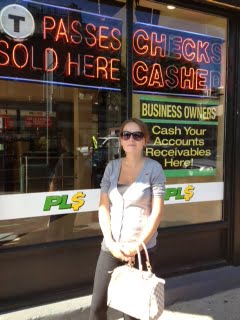
Make-up of Non-Bank Customers Changes

Having cashed her McDonald’s paycheck at a check cashing outlet in Boston’s South End neighborhood, Nicole DeConinck has completed one half of her Friday afternoon ritual.
She will now walk to a nearby pharmacy to purchase a debit card, which she’ll use to make her purchases.
More Americans like DeConinck say they have used non-traditional financial services, such as check cashing, or are getting loans from places like pawn shops, payday lenders, or firms that offer advances on IRS refunds. In 2011, 41 percent had, up from 36 percent in 2009, according to the Federal Deposit Insurance Corp., which insures U.S. commercial banks.
One thing fueling this growth is that non-bank loans, which are ready sources of cash, are reaching new segments of the American public, according to a recent analysis of the FDIC’s data by Gregory Mills and William Monson of the Urban Institute in Washington. Once associated with minorities, immigrants and low-income workers, they found they’re more prevalent among non-Hispanic whites, college graduates, and people who earn more than $50,000.
“It’s a measure of the extent of distress throughout the American economy that more and more individuals regarded as insulated from having to turn to these kinds of borrowed funds are now having to access them,” Mills said. The practice of using non-bank credit products is growing because of tighter credit and greater difficulty getting a bank loan, slow wage growth, and fewer resources available from charitable organizations, non-entitlement government programs, and friends or family.
For people who use these untraditional loans and other financial services, they make sense for a variety of reasons – convenience, because they have poor credit, or in DeConinck’s case, to avoid paying bank fees.
She said she gave up on her local bank five years ago, after it hit her with steep fees when she accidently overdrew her account. Now, she pays a $2 fee to cash a $150 check, and the debit card costs her another $4.95. But her current system has one singular advantage over a checking account: she always knows exactly how much money she has.
“I don’t want a bank account,” she said.
Full disclosure: the Urban Institute is a research affiliate of the Center for Retirement Research, which supports this blog.






